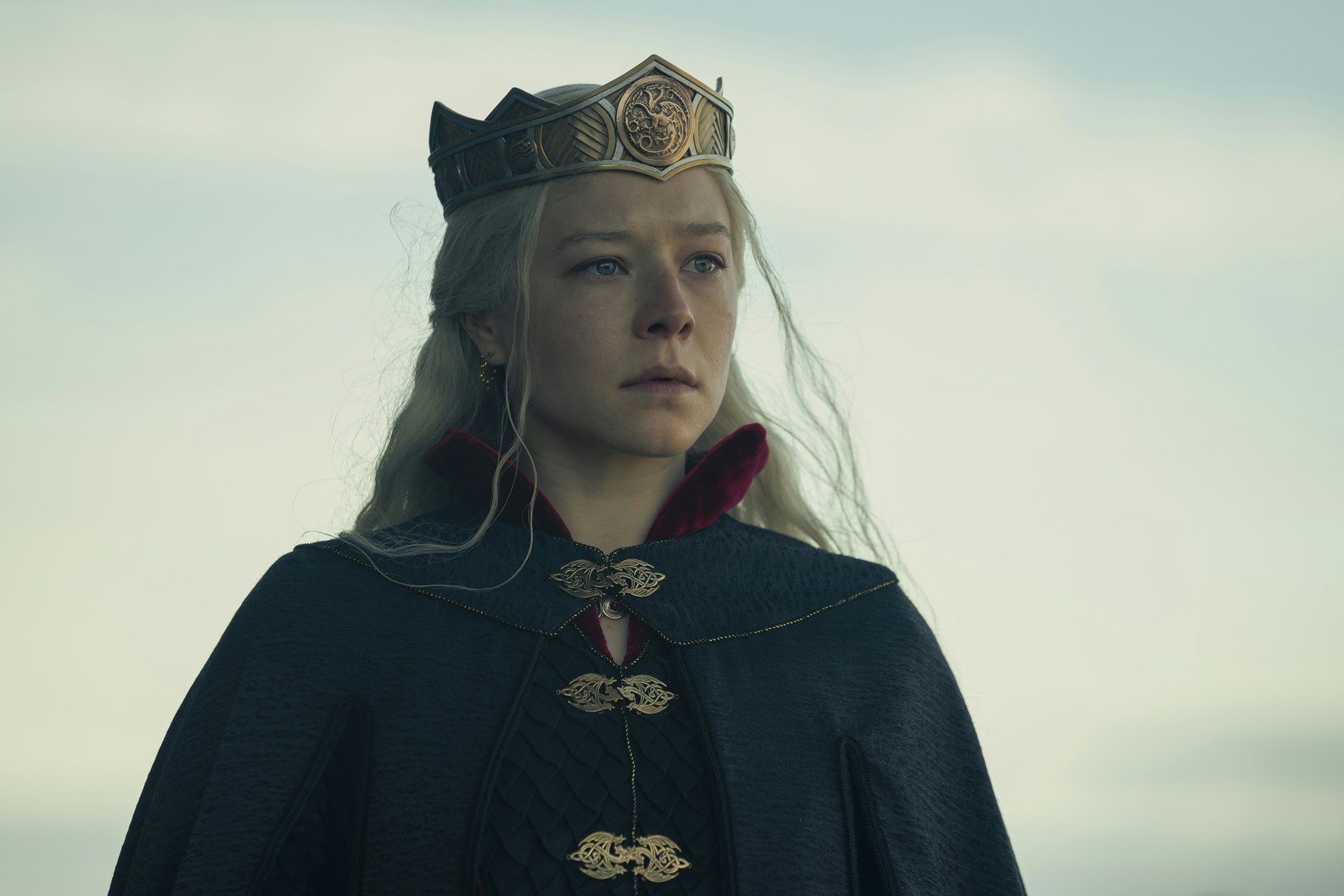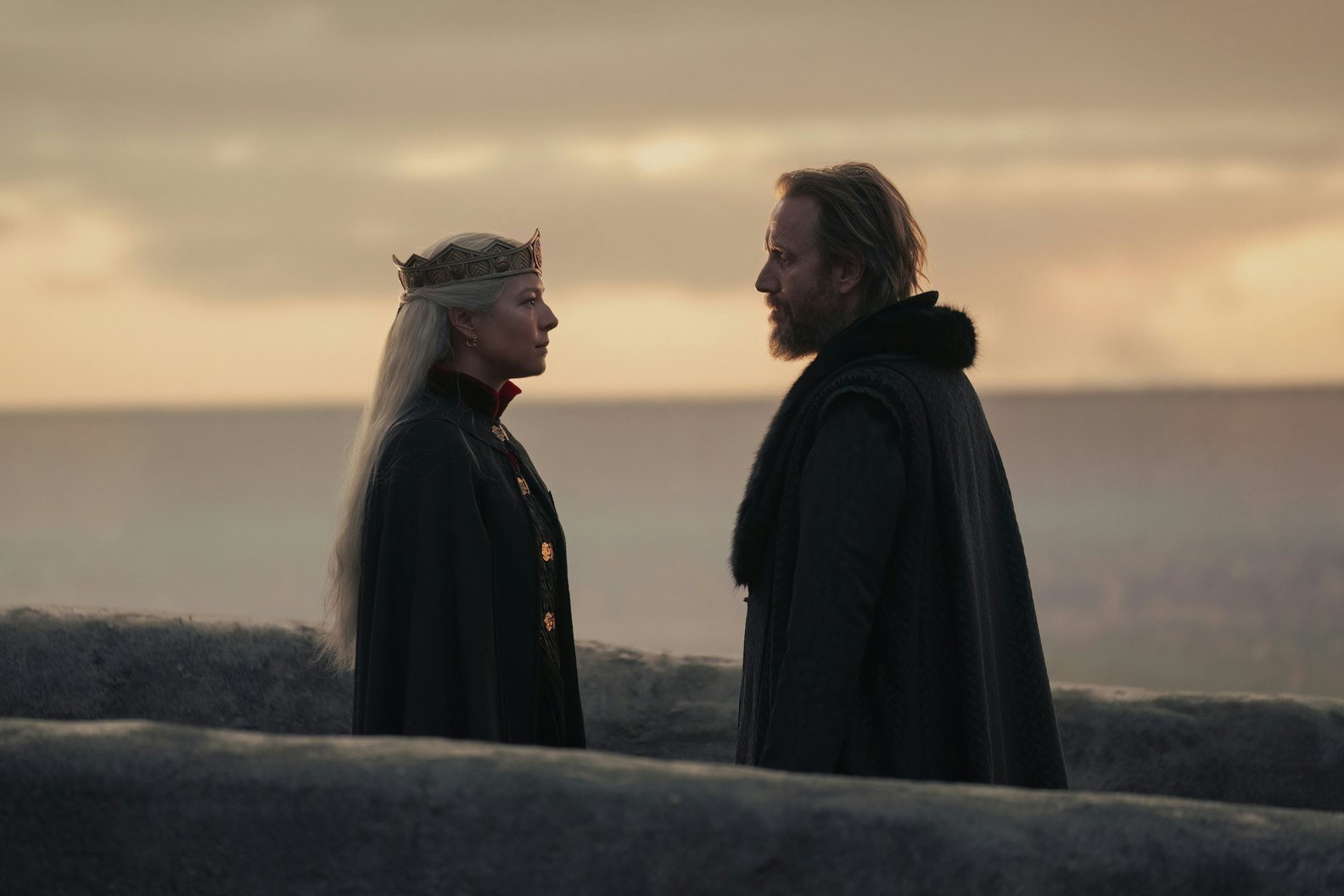
For the most part, HBO’s House of the Dragon has remained faithful to Fire & Blood, the 2018 novel that inspired it. That said, Season 1 does diverge from Fire & Blood in a handful of small but significant ways. Most notably, the show has gone out of its way to make its two lead characters, Alicent Hightower (Olivia Cooke) and Rhaenyra Targaryen (Emma D’Arcy), much more nuanced than their Fire & Blood descriptions.
As readers have already noted, House of the Dragon’s Rhaenyra is far more caring and far less impulsive than she is in George R.R. Martin’s text. The show’s softer characterization has been seen as an attempt to make the character easier to root for.
But what if House of the Dragon’s depiction of Rhaenyra has revealed a fact about Fire & Blood that few readers had previously considered?

The History of Westeros... — Across its first 10 episodes, House of the Dragon has emphasized the lengths men will go to to keep women out of power. That theme is introduced in the show’s first scene, when the Lords of Westeros choose Viserys I Targaryen (Paddy Considine) as the next heir to the Iron Throne instead of his cousin, Rhaenys Targaryen (Eve Best), despite the latter having the stronger claim.
Later, conflict breaks out in the Season 1 finale because Otto Hightower (Rhys Ifans) and the Greens believe Rhaenyra’s half-brother, Aegon II Targaryen (Tom Glynn-Carney), should sit on the Iron Throne because he’s male. When Alicent presents her own case for Aegon’s ascension, she learns that the men of the small council have already been plotting without her. Taking those facts into account, it’s also worth noting that Fire & Blood is written as a fictional historical record from the perspective of a Westerosi historian named Archmaester Gyldayn.
Archmaester Gyldayn is, notably, a man.

...According to Men — If the men of Westeros really would, as both Game of Thrones and House of the Dragon have proven, “put the realm to the torch” before they’d let a woman sit on the Iron Throne, then what reason is there to believe that Gyldayn’s depiction of Rhaenyra Targaryen in Fire & Blood is a fair one? Even if Gyldayn has nothing against Rhaenyra, it’s possible the ingrained misogyny of Westeros still informed his accounting of her life, and the sources he used.
In both Fire & Blood and House of the Dragon, Rhaenyra does hold a stronger moral and political position than her half-brother and his Green supporters. Rhaenyra is betrayed, slighted, and insulted when Aegon II is put on the Iron Throne instead of her. However, Fire & Blood paints both Rhaenyra and Aegon II as largely unlikeable.
In Fire & Blood, Alicent Hightower also comes across as far more conniving and villainous than she does in House of the Dragon. In fact, it’s hard not to feel like Fire & Blood’s version of Alicent has a lot in common with the kind of scheming woman archetype that’s been present in literature for centuries. She’s basically a Westerosi Lady Macbeth.

The Inverse Analysis — By reimagining both Rhaenyra and Alicent as far more compassionate and measured women than they’re described as in Fire & Blood, House of the Dragon has offered a surprising commentary on its own source material. In doing so, not only has the HBO series potentially revealed the unspoken misogyny present in the very book that inspired it, but it’s also further strengthened one of House of the Dragon’s main themes.
House of the Dragon Season 1 is available to stream now on HBO Max.







